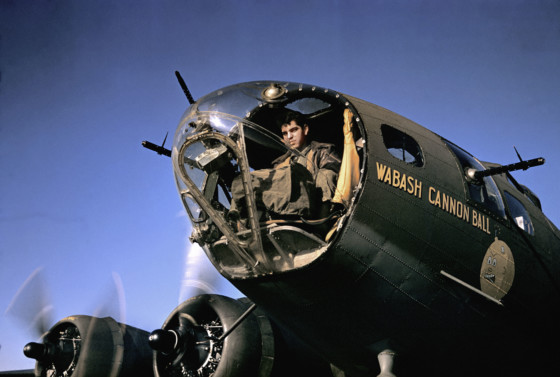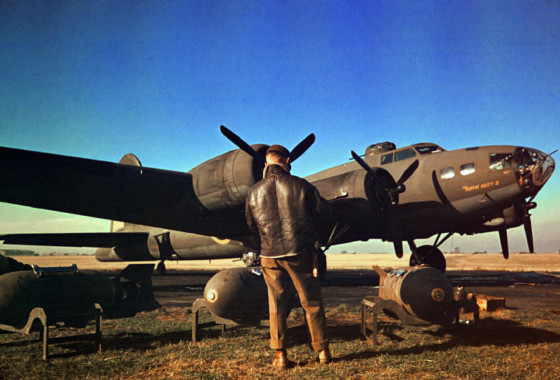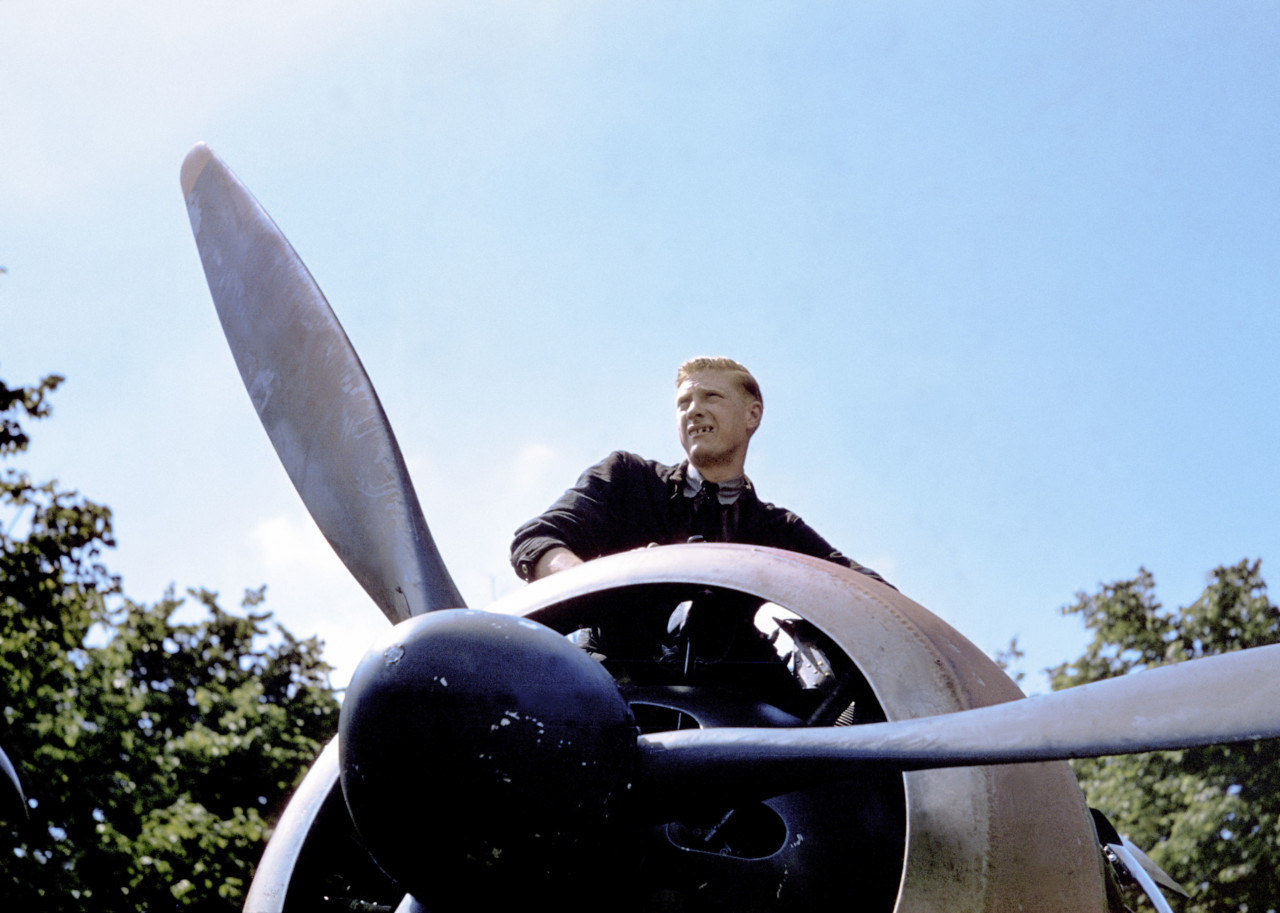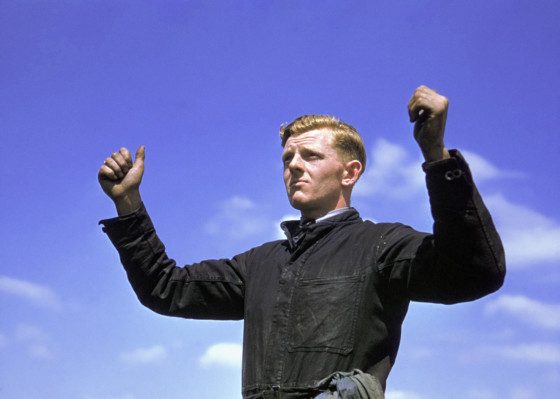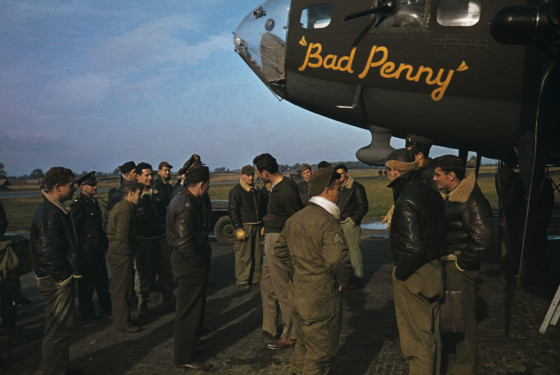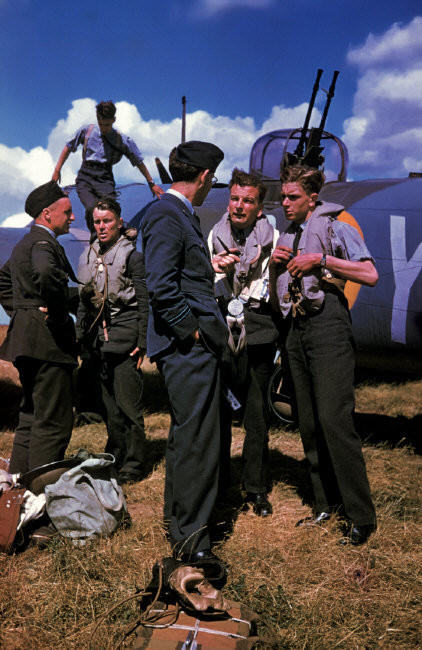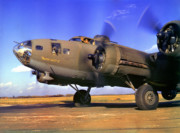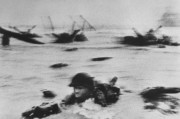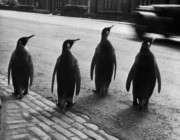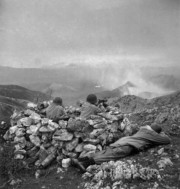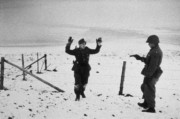The Allied Air War in Color
Robert Capa’s rare color photographs depict life on an airbase in England
Early in World War I, military pilots flew their planes into action armed with little more than pistols and hand-held bombs for combat. Taking shots at the enemy while navigating a light-weight plane built mostly of wood and doped fabric was a risky ordeal but, ultimately, proved a valuable tactical development during the war. Over the course of that conflict aircraft modernized remarkably quickly, with synchronized machine guns soon being installed in aircraft, marking the birth of the first true warplanes. In realizing the potential benefits of a specialist department to manage the emerging aerial battlefield, the British government launched an independent Royal Air Force (RAF) on April 1, 1918. The interwar years saw rapid developments in military aviaition with all-metal monoplanes developed, higher and highter altitude and speed records being set, and nations building up fully modernised air forces. By the outbreak of World War II it was clear that aviation would be key to the conflict’s outcome.
In 1942, Magnum co-founder Robert Capa photographed an RAF base in England, the exact location of which was classified. Capa, whose stark monochrome images of the Spanish Civil War earned him praise as ‘the greatest war photographer in the world’ by Picture Post, shot the story in black and white and color film. At the time, conflict photography was primarily shot in black and white, due to it being less expensive and quicker to process, but a few magazines, such as The Saturday Evening Post had started to publish in color in a bid to get ahead of the competition.
Eager to experiment and hone his technical skill, Capa would often carry at least two 35mm cameras, seamlessly switching between the two options. Unfortunately, neither Illustrated nor Colliers’ published any of the color images of this story, in part, probably, because of the expense and time required. But here we see in vivid color American and British aircraft and crews preparing for attacks on occupied France.
At the time, press regulations forbade photographers from flying with missions. Instead, Capa, who possessed a talent for capturing the hardships and emotional toil of war, honed in on the camaraderie between men. In the December 5, 1942 Illustrated article, Capa describes how he stood alongside an older intelligence officer, who turning to the photographer, said, “The way those kids get on with the job, without any gestures or fuss, makes us, the adventurers and heroes of the last war, very envious, and very proud.”
Capa also recalls the broad smile belonging to the pilot of the ‘Bad Penny’, who, upon climbing out of the cockpit with youthful optimism, stated, “After this is over, the longest trip I’ll ever take will be from my house to the nearest river on my bicycle with my fishing gear on my back.” When Capa arrived in Sicily in July 1943, he would abandon color film for the rest of the war. While the RAF color slides remained virtually unseen until 2002, today, these images take on new critical importance, offering a rare opportunity to see WWII in color and to witness servicemen in candid moments away from the frontline.



